
Ingredient
Fermented or pickled vegetables
Tangy Delights: Fermented and Pickled Vegetables
Fermented or pickled vegetables are created through the process of lacto-fermentation, where beneficial bacteria convert sugars into lactic acid. This process gives the vegetables a tangy and slightly sour taste, along with a unique texture. Fermented vegetables can range from crunchy to soft, depending on the specific vegetable and fermentation time. They come in a variety of vibrant colors, adding visual appeal to any plate.
Origins and history
The practice of fermenting or pickling vegetables dates back thousands of years and can be found in cultures around the world. Fermentation was initially used as a preservation method to extend the shelf life of vegetables. Over time, people discovered the health benefits associated with fermented foods, leading to their incorporation into traditional cuisines. Today, fermented and pickled vegetables are enjoyed for their tangy flavors and probiotic properties.
Nutritional information
Fermented or pickled vegetables are rich in probiotics, which are beneficial bacteria that support gut health. They are also a good source of vitamins, minerals, and dietary fiber. The fermentation process increases the bioavailability of certain nutrients, making them easier for the body to absorb. However, it is important to note that pickled vegetables may contain higher levels of sodium due to the pickling brine.
Allergens
Individuals with sensitivities to fermented foods or specific vegetables should exercise caution when consuming fermented or pickled vegetables. Additionally, some pickled vegetables may contain added sugars or artificial preservatives, which can be problematic for those with dietary restrictions or health conditions. Reading labels and choosing natural, homemade, or organic options can help mitigate these concerns.
How to select
When selecting fermented or pickled vegetables, look for jars or packages that are properly sealed and free from any signs of spoilage, such as mold or off-putting odors. The vegetables should appear vibrant in color and have a crisp texture. If purchasing from a farmers market or specialty store, ask the vendor about the fermentation process and any additional ingredients used.
Storage recommendations
To maintain the quality and flavor of fermented or pickled vegetables, store them in the refrigerator. The cold temperature slows down the fermentation process and helps preserve their texture and taste. It is important to keep the vegetables submerged in the brine to prevent spoilage. Properly stored, fermented or pickled vegetables can last for several months.
How to produce
Producing fermented or pickled vegetables at home requires basic equipment, such as glass jars, salt, and water. The process involves submerging the vegetables in a brine solution and allowing them to ferment at room temperature for a specific period. Online resources and cookbooks can provide detailed instructions on the fermentation process for different vegetables.
Preparation tips
Fermented or pickled vegetables can be enjoyed as a condiment, side dish, or ingredient in various recipes. They add a tangy and flavorful element to sandwiches, salads, tacos, or grain bowls. Fermented vegetables, such as sauerkraut or kimchi, are commonly used in traditional dishes like Reuben sandwiches or Korean bibimbap. Pickled vegetables, such as cucumbers or radishes, can be served alongside charcuterie boards or used as a topping for burgers and tacos.
Culinary uses
Fermented or pickled vegetables are widely used in many cuisines around the world. They are a key component in dishes like sauerkraut in German cuisine, kimchi in Korean cuisine, and pickled cucumbers in American cuisine. Their tangy and flavorful nature makes them a versatile ingredient in both traditional and modern recipes.
Availability
Fermented or pickled vegetables are commonly available in most grocery stores, supermarkets, and farmers markets. They can also be made at home using fresh vegetables and simple fermentation techniques. The availability of specific types of fermented or pickled vegetables may vary depending on the region and cultural preferences.
More ingredients from this category
Recipes using Fermented or pickled vegetables » Browse all
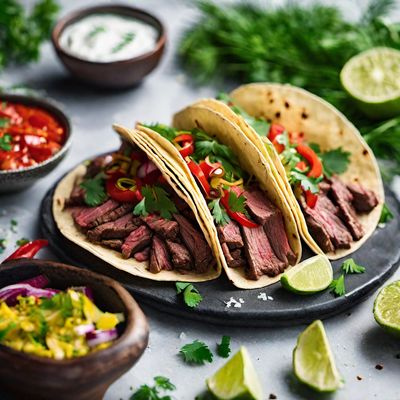
Carne Asada Tacos with a Russian Twist
Russian-Inspired Carne Asada Tacos: A Flavorful Fusion
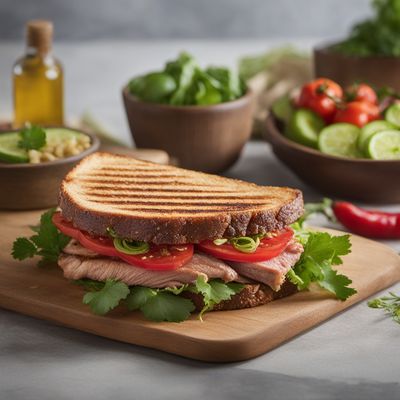
Inca-style Bone-in Pork Chop Sandwich
Andean Delight: Inca-inspired Pork Chop Sandwich

Crispy Korean Mung Bean Pancakes
Golden Delights: Crispy Mung Bean Pancakes with a Korean Twist
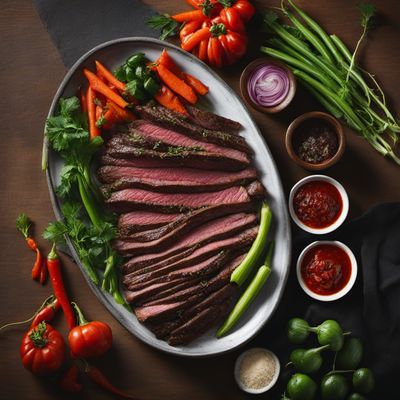
Galmaegisal with Moldovan Twist
Moldovan Grilled Pork Galmaegisal: A Fusion of Korean and Moldovan Flavors
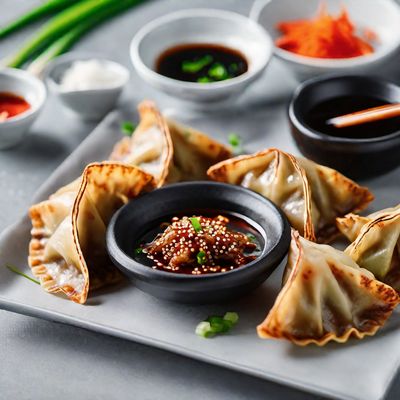
Korean-style Gyoza
Kimchi Gyoza: A Fusion of Korean and Japanese Flavors

Korean-style Nasi Goreng
Kimchi Fried Rice: A Korean Twist on Indonesian Nasi Goreng

Guangxi-style Egg Sandwich
Savory Delights: Guangxi-inspired Egg Sandwich

Shanxi-style Breakfast Delight
Savory Shanxi Morning Feast

New Nordic Beetroot Risotto
Nordic Beetroot Delight: A Modern Twist on Italian Risotto
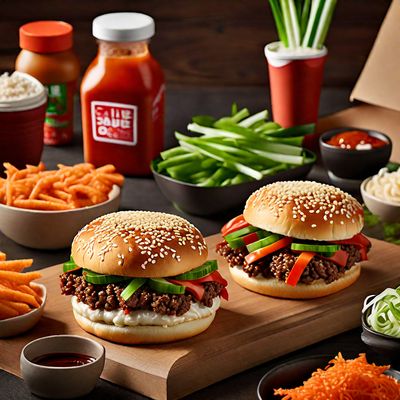
Bulgogi - Fast Food Style
Bulgogi Burger with Kimchi Slaw

Huevos Rancheros
Latvian-style Ranch Eggs

Vietnamese-style Focaccia
Banh Mi Focaccia: A Fusion of Italian and Vietnamese Flavors

